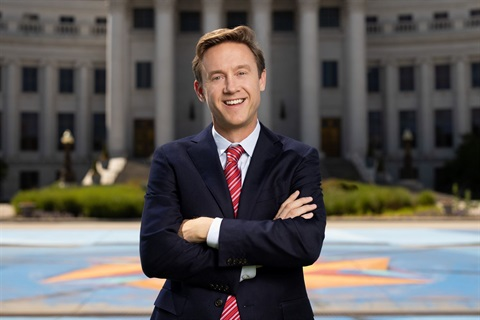While each one has its own unique qualities—different materials, occupants, size—what they share is the reality that brought them to where they are. What we’re talking about here are the seemingly countless homeless/unhoused encampments that have become ubiquitous hallmarks in nearly every American city including Denver.
Denver’s unhoused community has planted flags for the world to see on the city’s busiest arterials and in neighborhoods—all in plain site. Though, the city recently announced that one encampment in the shadow of the Governor’s Mansion is scheduled for removal.
This transient population, whose numbers are the source of constant reevaluation were a major theme of Denver Mayor Mike Johnston’s run for office and the city’s top job. Now, in office, the new mayor has announced plans to turn his promise into action.
“We are on track to meet our historic goal of housing 1,000 unsheltered Denverites,” said the mayor in an emailed statement. “We are incredibly excited about the progress we’ve made so far.”

The mayor’s end goal, he said, is to have a thousand currently unhoused in safe and secure housing by year’s end. Also, he said, those who’ll relocate from the street to more traditional shelter will be offered access to “workforce training, mental health support, addiction-based treatment, and long-term housing support.”
The mayor announced in July plans to begin a major campaign to clear homeless encampments that pose health and safety issues with the ultimate goal of finding more permanent accommodations for—at least the beginning—a thousand individuals.
“I have to say that I appreciate that he came out so early” with a plan to tackle this issue, said Denver City Council’s Selena Gonzales-Gutierrez. The former state legislator and first-term councilmember calls the move to relocate this population into a safer and more secure environment “basic human right.”
As it stands, the mayor is charging a group of 50 city employees to secure funding for accommodations for the first thousand unhoused. The likely landing spots for them will include rental units, repurposed hotels or motels and buildings no longer in use for commerce or their original purpose.
The ultimate cost of the mayor’s ambitious plan is uncertain now, though in a September news conference Johnston spoke confidently that “we know how to do it with existing resources.” It is expected that the lion’s share of the money will come from that part of the city’s budget dedicated to homelessness.
In announcing his plan, Johnston displayed a chart identifying where the money will go. The biggest portion of the investment go to hotel conversion cost an estimated $18.9 million for hotel conversions, including $5.4 million for leasing; $19.6 million pallet shelters, tiny homes, site preparations and utilities; $4 million for rapid rehousing contracts; $750,000 for outreach, transportation and other related services.
Some critics of Mayor Johnston’s plan argue that placing Denver’s unhoused into more permanent accommodations will only serve to attract similarly challenged men and women now living in other places to come to Denver. Gonzales-Gutierrez thinks that concern is reactionary and unlikely to happen. “I have not seen this,” she said. “My understanding is that people who are unhoused are people who are living there and simply became homeless.”
Not unlike challenges in other cities, a number of Denver’s impromptu encampments have pushed past simple benign ‘crash sites.’ One location at 17th Avenue and Logan Street was swept clear after a shooting. The sweep was followed with offers from the city for services making the relocation a bit less traumatic, including services for mental health care. Not surprisingly, campers occupying the site disputed the official explanation of ‘violence.’
As Johnston campaigned across the city for his current job, homelessness was never far from his speeches. He promised that when his first term as mayor ended, he would have ‘ended homelessness.’ House1000’ is the first leg of his four-year journey. At the end of the first ten days of September, “housing outcomes” had been achieved for 101 individuals. Of that number, a dozen had found “permanent” shelter with family or friends.
Homelessness is not simply a Denver issue, but an American issue. According the the Department of Housing and Urban Development, there were an estimated 582,000 men, women and children who had experienced homelessness in 2022.
One city that has been seen as a model for an aggressive and considerate approach to solving homelessness is Houston. The country’s fourth largest city using a plan similar to what Denver hopes will work for it, moved more than 25,000 people off the streets and into safer, more stable accommodations.
If Denver’s and Mayor Johnston’s approach solves a problem that previous administrations wrestled with but could not quite solve, it will quell serious issues that downtown merchants and businesses along with smaller businesses outside center city have long complained about. That is, that homeless encampments that almost seemed to spring up overnight create health and safety issues as well as impact their bottom lines.




